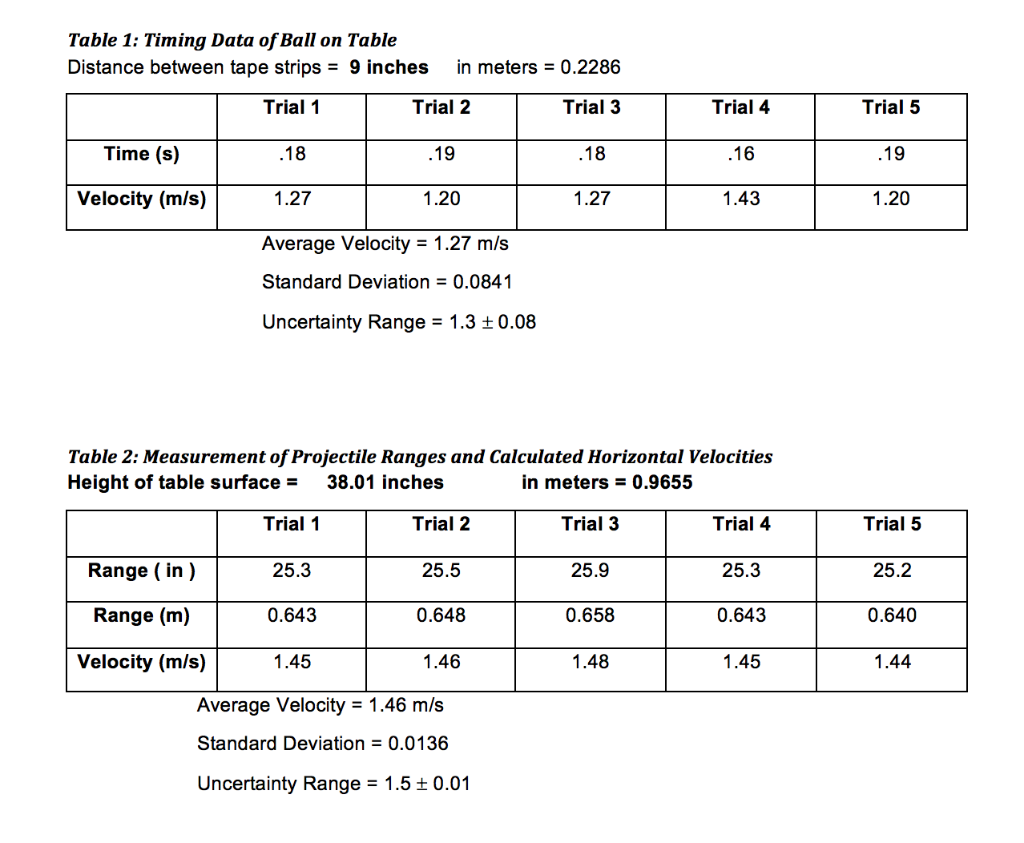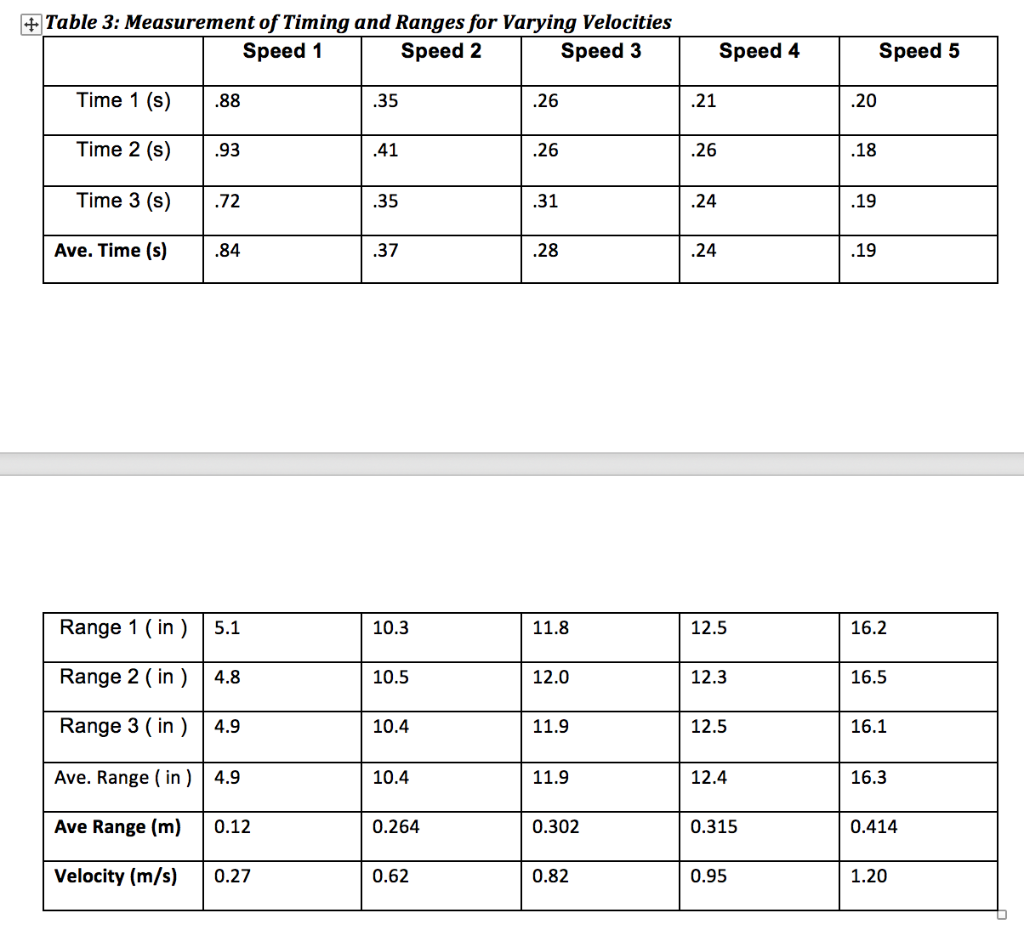Question
You'll need to collect range data by measuring the horizontal distance the ball lands from the launch line marked on the floor, as indicated by
You'll need to collect range data by measuring the horizontal distance the ball lands from the launch line marked on the floor, as indicated by R in the figure above. If you can't launch the ball (again from the same ramp height) and closely watch where the ball lands on the floor by yourself, then enlist in an assistant that can perform one of these operations. Once the spot the ball lands is determined, measure the distance from it to the starting line on the floor using a ruler or tape measure. Estimate your distances to either tenths of an inch or millimeters depending on the tool you are using. Tenths of an inch will be easier to convert to meters later. Place this measurement in Table 2 using the appropriate units as collected, then place the equivalent range value converted to meters. Repeat for at least a total of 5 measurements. Also be sure to measure the height of your table above the floor, again using a tape measure, carpenters square or level, or sewing tape, and record in Table 2. Use as much precision as you can.

PART 2:
***Again this is just to explain the experiment, not the actual question***
Next we are going to measure the horizontal range of the projectile for different velocity values. There are two ways the velocities may be made to vary, by either adjusting the height of the ramp, or by adjusting the location of the tape strip on the ramp. As in part 1, you can measure the timing of the ball on the table and the range distance on the floor separately or simultaneously. Starting with a slow speed, collect 3 sets of times and 3 sets of ranges for each speed, and record in Table 3. Then repeat for a total of 5 different speeds recorded in each column in Table 3. 
***This is the actual question***
In this section of your report, you'll want to offer a narrative on the precision of the computed velocity values from tables 1 and 2 by using the uncertainty ranges already computed. The precision gives you an indication of the level of random errors involved. Compute the percent difference between the average velocities found from both methods from Part 1., to indicate an accuracy level. Finally report on the level of precision from Part 2, simply by judging the spread of the timing and range data for each speed value. Are they comparable to the spread in Part 1?
Table 1: Timing Data of Ball on Table Distance between tape strips = 9 inches in meters = 0.2286 Trial 1 Trial 2 Trial 3 Time (s) Velocity (m/s) .18 Range (in) Range (m) Velocity (m/s) 1.27 Average Velocity = 1.27 m/s Standard Deviation = 0.0841 Uncertainty Range = 1.3 0.08 25.3 .19 0.643 1.20 1.45 Table 2: Measurement of Projectile Ranges and Calculated Horizontal Velocities Height of table surface = 38.01 inches in meters = 0.9655 Trial 1 Trial 2 Trial 3 25.5 0.648 .18 1.46 Average Velocity = 1.46 m/s Standard Deviation = 0.0136 Uncertainty Range = 1.5 0.01 1.27 25.9 0.658 Trial 4 1.48 .16 1.43 Trial 4 25.3 0.643 1.45 Trial 5 .19 1.20 Trial 5 25.2 0.640 1.44 + Table 3: Measurement of Timing and Ranges for Varying Velocities Speed 1 Speed 2 Speed 3 Time 1 (s) Time 2 (s) Time 3 (s) Ave. Time (s) .84 .88 .93 .72 Range 1 (in) 5.1 Range 2 (in) 4.8 Range 3 (in) 4.9 Ave. Range (in) 4.9 Ave Range (m) 0.12 Velocity (m/s) 0.27 .35 .41 .35 .37 10.3 10.5 10.4 10.4 0.264 0.62 .26 .26 .31 .28 11.8 12.0 11.9 11.9 0.302 0.82 .21 .26 .24 .24 Speed 4 12.5 12.3 12.5 12.4 0.315 0.95 .20 .18 .19 .19 Speed 5 16.2 16.5 16.1 16.3 0.414 1.20
Step by Step Solution
3.40 Rating (159 Votes )
There are 3 Steps involved in it
Step: 1

Get Instant Access to Expert-Tailored Solutions
See step-by-step solutions with expert insights and AI powered tools for academic success
Step: 2

Step: 3

Ace Your Homework with AI
Get the answers you need in no time with our AI-driven, step-by-step assistance
Get Started


